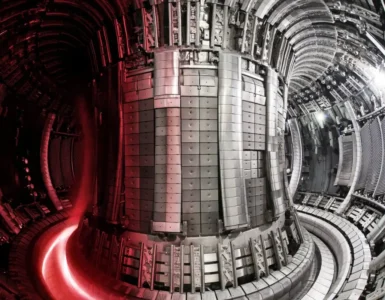By Rhodilee Jean A. Dolor
In 1936, a set of artifacts consists of a ceramic pot, a tub of copper and a rod of iron was discovered in a village in Iraq. Two years later, German archaeologist Wilhelm König took notice of the relic at the Baghdad Museum. He went on to publish a paper suggesting that the device, which he dated back to the third century BC, could have been a crude form of battery used for electroplating.
Whether or not the so-called Baghdad Batteries were indeed batteries is still a subject of debate but energy storage has improved over time. In 1799, Italian physicist Alessandro Volta invented what is considered as the first true battery — a device consists of discs of copper and zinc separated by a cardboard soaked in salty water. Today, far more sophisticated batteries have emerged providing power for things ranging from earbuds to electric cars.
State of Energy Storage Technology
Demand for batteries is at an all-time high. According to electric car maker and clean energy company Tesla, its energy division, which installs solar panels, solar roofs and stationary energy storage products delivered a record number of batteries in the third quarter of the year. The company said that Tesla Energy’s energy storage deployment rose by 62% to 2.1 GWh YoY over the period, the highest in its record.
With virtually everything being powered by energy now, researchers work on advancing battery technology. Lithium-ion batteries, the most popular and regularly used batteries today, for instance, saw significant improvement over the past decade. Lithium-Ion battery cell densities have nearly tripled between the years 2010 and 2020, which translates to lighter batteries and cheaper handling expenses in the supply chain.
Setbacks
Despite the improvements, there are still setbacks that researchers need to resolve amid rising demand for batteries. Mining lithium, the lightest known element on Earth that is used in batteries that power smartphones, laptops, electric vehicles and a number of other devices, damages the environment and affects communities. Cobalt and nickel, which are also used as materials in batteries, are also scarce and expensive.
“The extraction of lithium has significant environmental and social impacts, especially due to water pollution and depletion. In addition, toxic chemicals are needed to process lithium. The release of such chemicals through leaching, spills or air emissions can harm communities, ecosystems and food production,” reads a report published by Friends of the Earth on the implications of extracting lithium.
The report also explained how mining lithium impacts the residents of communities where the extraction takes place.
“In Chile’s Atacama salt flats, mining consumes, contaminates and diverts scarce water resources away from local communities. The extraction of lithium has caused water-related conflicts with different communities, such as the community of Toconao in the north of Chile. In Argentina’s Salar de Hombre Muerto, local communities claim that lithium operations have contaminated streams used for humans, livestock and crop irrigation.”
Efficiency and safety are also core issues in battery technology. Despite significant improvements, batteries still do not last long enough and can even be potentially dangerous. A 2021 paper published in the MRS Bulletin explains the risks of energy storage.
“In the case of batteries, thermal runaway occurs when an external or internal condition, causes the energy stored within the battery to begin to be released at a rate faster than it can be dissipated resulting in an uncontrolled temperature rise of the battery than can then result in violent venting, fire, and smoke.”
Potential Solutions
Given the scarcity, cost and environmental impact of materials currently used in batteries, researchers propose developing battery technologies that use more common and environmentally friendly materials.
“Alternative types of electrode based on cheap, common metals such as iron and copper need to be developed urgently. In our view, the most promising candidates involve ‘conversion materials’, such as copper or iron fluorides and silicon. These store lithium ions by bonding chemically with them,” wrote Gleb Yushin, from the Georgia Institute of Technology, and colleagues in a comment published in the journal Nature in 2018.
Researchers also explore using sustainable and more abundant materials. A team from the Karlsruhe Institute of Technology in Germany, for instance, has developed a prototype battery that uses seawater.
Researchers at Bemp Research Corp. also used hemp, a plant used in clothing, building materials and car parts to develop a lithium-sulfur battery that the firm claims as cheaper, has higher performance and is more recyclable than lithium-ion batteries.
“LiS/B4C-hemp is superior to Li-ion batteries in terms of gravimetric energy density, safety, and, most importantly, costs and environmental friendliness. Our chemistry uses lightweight and abundant materials such as sulfur, boron, and carbonized hemp – instead of heavy metals such as nickel and cobalt. LiS/B4C-hemp batteries will be great for heavy-duty trucks and electric airplanes,” said Bemp founder Son Nguyen.
Work on solid-state lithium-ion batteries, which use solid electrodes and a solid electrolyte, is also currently underway. These devices show promise in storing more energy compared with lithium-ion batteries. They also offer a safer alternative in terms of flammability.
“The first huge advantage is a marked improvement in safety at cell and battery levels: solid electrolytes are non-flammable when heated, unlike their liquid counterparts. Second, it permits the use of innovative, high-voltage high-capacity materials, enabling denser, lighter batteries with better shelf-life as a result of reduced self-discharge,” explained battery company Said, which has been working on solid-state batteries.
“At system level, it will bring additional advantages such as simplified mechanics as well as thermal and safety management.”
Advancing Battery Technology
It may still be years away before companies mass produce sustainable batteries that can meet the energy needs of the world, but thanks to the relentless efforts of researchers who are working to develop more efficient and safer batteries, energy storage has certainly come a long way from the crude ceramic batteries discovered in Iraq and Volta’s device.









